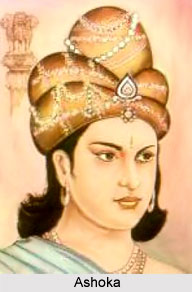 Ashoka ranks among the greatest kings of the history. As remarked by H. G. Wells, "Amidst the tens and thousands of the names of monarchs that covered the columns of history, the name of Ashoka shines above like a star". Ashoka proved fully worthy of his heritage; he was a man of unbounded energy and gave himself without stint to the tasks of perfecting the administration of his empire and ensuring happiness of his subjects. The range of his sympathies was wide and he was by no means unwilling to adopt foreign models of administration and art of the growing needs and tastes of his country.
Ashoka ranks among the greatest kings of the history. As remarked by H. G. Wells, "Amidst the tens and thousands of the names of monarchs that covered the columns of history, the name of Ashoka shines above like a star". Ashoka proved fully worthy of his heritage; he was a man of unbounded energy and gave himself without stint to the tasks of perfecting the administration of his empire and ensuring happiness of his subjects. The range of his sympathies was wide and he was by no means unwilling to adopt foreign models of administration and art of the growing needs and tastes of his country.
For the knowledge of the history of the reign of Ashoka the sources can be divided into two classes. As for example the two can be named as literary sources, and archaeological sources.
Literary sources
Sinhali texts, `Dipavamsa` and `Mahavamsa`, `Dtvyavandan` by Buddha Ghosh, `Ashokavadanmala`,`Arya-manju-sri-mula-kalpa`, `puran`, `Rajtaringini` are the main literary works which give us valuable detailed information about the reign of Ashoka. Moreover, the writings of Chinese travellers Fabian, Huen tsang and Itsing add some more knowledge about Ashoka as well.
Archeological sources:
Ashoka`s own inscriptions are the most important archeological source to know the history of his period. Ashoka issued these inscriptions for the propagation of `Dtiamma.` Girinar inscription of Rudradharama Nagajuni Guha inscription etc. throw a great light on the history of Ashoka.



















